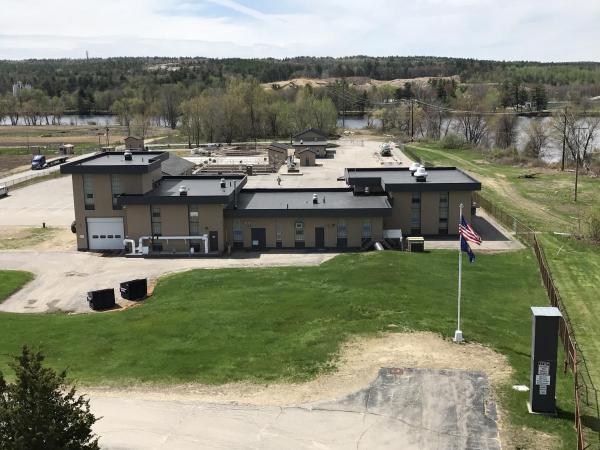New Clarifier Tanks for Allenstown
An analysis by Jeffrey Backman, AWTF Superintendent

A warrant article for $11.5 million for new clarifier tanks for the Allenstown Wastewater Treatment Facility (AWTF) was approved Jan. 8th by the Selectmen for inclusion in the town warrant. The selectmen asked Michael Trainque, Engineer for Hoyle Tanner & Associates, about the effect on the sewer rate. Mr. Trainque stated that, until they receive approval for loans from the US Dept. of Agriculture (USDA), they could not answer that concern. Once funding is secured, they will make the effective sewer rate public before the March 12 election.
A few discussions with Jeffrey Backman about the purpose, benefit, funding, and construction of new tanks led to the following in-depth analysis. Michael Trainque contributed to the story.
The existing secondary clarifiers at the Wastewater Treatment Facility are almost 50 years old, have greatly exceeded their useful life (20 years), do not meet current design standards, and are a significant bottleneck in the ability of the treatment plant to properly process future flows and loadings. Secondary clarifiers play a critical role in wastewater treatment plants. Their main purpose is to separate treated wastewater from the biological mass, a process known as secondary clarification. They are typically located downstream of the biological treatment process.
The primary task of secondary clarifiers is clarification and thickening. They remove suspended solids or solid particulates from the liquid, which are then settled down by gravity. The concentrated solids are known as biosolids, while those that float to the surface of the liquid are called scum. Clarifiers are large settling tanks with built-in mechanical means like scraper blades to continuously remove solids towards the pipe or place where sludge and scum collection occurs.
The performance of a wastewater treatment plant and the ability to meet required discharge permit requirements depends on the proper functioning of the secondary clarifiers. Hydraulic and solids loading has a significant impact on the performance of secondary clarifiers in wastewater treatment plants. Allenstown’s secondary clarifiers are inefficient at providing adequate separation of the biological mass, which lead to several operational challenges and increased costs.
Settling of Solids: The average daily flow to the treatment plant in 2023 was 0.730 million gallons per day (MGD). The maximum daily total received at the treatment plant in 2023 was 2.143 MGD. When flows go up during periods of wet weather and snow melt, the result is higher hydraulic loading rates, which reduce the settling of solids. This is because an increase in the flow rate can disturb the settling process, causing solids to remain in suspension rather than settling at the bottom, and results in a lower effluent quality, and the possibility of violating discharge permit requirements. The shallow depth of the existing clarifier tanks does not allow for adequate settling and separation of solids.
Effluent Quality: The performance of secondary clarifiers in terms of minimizing effluent pollutants is critical to the overall facility effluent quality. Higher hydraulic loading rates can lead to more pollutants remaining in the effluent.
Increased Costs: Chemicals are added to the biological mass prior to the clarification process. The purpose of the chemicals is to enhance or accelerate the settling time in the secondary clarifiers. New clarifiers designed in accordance with current design standards will allow for the elimination or reduction of the chemical addition.
We have submitted an application to the US Dept. of Agriculture (USDA) for a Clean Water State Revolving Fund Loan and a USDA/Rural Development Loan to fund the construction and engineering of the project. Grants or principal forgiveness on the loans may be offered in the loan package from the USDA. The amount of the grant or principal forgiveness could be as high as 40% or as low as 0%.
We expect a response from USDA in June of this year. Repayment of the loan will be funded by both Allenstown and Pembroke. The parties have agreed on the language of a new intermunicipal agreement, which has been sent to the NH Attorney General's office for review. Once the agreement is finalized, Allenstown’s portion of the $11.5 million will be 45% or $5.175 million. Without the loan offer from the USDA, the impact on sewer rates is challenging to estimate since grant funding would reduce the overall loan repayment amount.
Allenstown can complete the project with minimal impacts on its sewer rates. Construction is estimated to take two years (two construction seasons).

